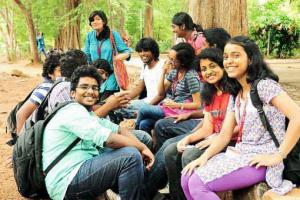- Chandigarh UT
- Creative Corner
- Dadra Nagar Haveli UT
- Daman and Diu U.T.
- Department of Administrative Reforms and Public Grievances
- Department of Biotechnology
- Department of Commerce
- Department of Consumer Affairs
- Department of Industrial Policy and Promotion (DIPP)
- Department of Posts
- Department of Science and Technology
- Department of Telecom
- Digital India
- Economic Affairs
- Ek Bharat Shreshtha Bharat
- Energy Conservation
- Expenditure Management Commission
- Food Security
- Gandhi@150
- Girl Child Education
- Government Advertisements
- Green India
- Incredible India!
- India Textiles
- Indian Railways
- Indian Space Research Organisation - ISRO
- Job Creation
- LiFE-21 Day Challenge
- Mann Ki Baat
- Manual Scavenging-Free India
- Ministry for Development of North Eastern Region
- Ministry of Agriculture and Farmers Welfare
- Ministry of Chemicals and Fertilizers
- Ministry of Civil Aviation
- Ministry of Coal
- Ministry of Corporate Affairs
- Ministry of Culture
- Ministry of Defence
- Ministry of Earth Sciences
- Ministry of Education
- Ministry of Electronics and Information Technology
- Ministry of Environment, Forest and Climate Change
- Ministry of External Affairs
- Ministry of Finance
- Ministry of Health and Family Welfare
- Ministry of Home Affairs
- Ministry of Housing and Urban Affairs
- Ministry of Information and Broadcasting
- Ministry of Jal Shakti
- Ministry of Law and Justice
- Ministry of Micro, Small and Medium Enterprises (MSME)
- Ministry of Petroleum and Natural Gas
- Ministry of Power
- Ministry of Social Justice and Empowerment
- Ministry of Statistics and Programme Implementation
- Ministry of Steel
- Ministry of Women and Child Development
- MyGov Move - Volunteer
- New Education Policy
- New India Championship
- NITI Aayog
- NRIs for India’s Growth
- Open Forum
- PM Live Events
- Revenue and GST
- Rural Development
- Saansad Adarsh Gram Yojana
- Sakriya Panchayat
- Skill Development
- Smart Cities
- Sporty India
- Swachh Bharat (Clean India)
- Tribal Development
- Watershed Management
- Youth for Nation-Building
Bridging gender and social gaps

Start Date :
Jan 22, 2015
Last Date :
Nov 01, 2015
00:00 AM IST (GMT +5.30 Hrs)
While the general participation rates in higher education has been steadily increasing and today our HE GER is 21.5%, this is not evenly spread across social groups and women. ...


Theme X
Theme X
Theme X
Theme X
Theme X
4. Which of the following will improve girls’ participation: Hostel? Scholarship? Assurence of safety?
All the three and besides as stated before the outlook of the parents, especially the
mothers need to be changed.
What are the reasons for students of the disadvantaged groups not going for higher education?
Ans: Family Background, money problems, safety, transport facilities.
What steps can be taken to ensure that students from deprived classes who pass out school join colleges and complete studies?
Ans: Scholarship, fees concession, free college transport facilities
How to ensure that the girls join colleges or polytechnic?
Ans: Safety
3.How to ensure that the girls join colleges or polytechnic?
In our college the ratio of boys and girls is almost 50:50. However, many girls are not allowed to pursue their career as parents perform their daughter’s marriage at the age of 18 or more. very fewr allow the daughter to pursue career even though the girls are willing. This is a social issue and parent’s reformation need to be done.
2.What steps can be taken to ensure that students from deprived classes who pass out school join colleges and complete studies?
Many graduates and postgraduates prefer jobs so as to enable them to look after the family. But now the awareness is increasing and many of the students are now going abroad also. The number of economic and other facilities may be increased to all, especially open and EBC class students will be benefited by it.
1.What are the reasons for students of the disadvantaged groups not going for higher education?
First, these students cannot afford the high fees for higher education.
However due to facilities to SC, ST, NT, OBC students and minorities, the situation is changing rapidly.